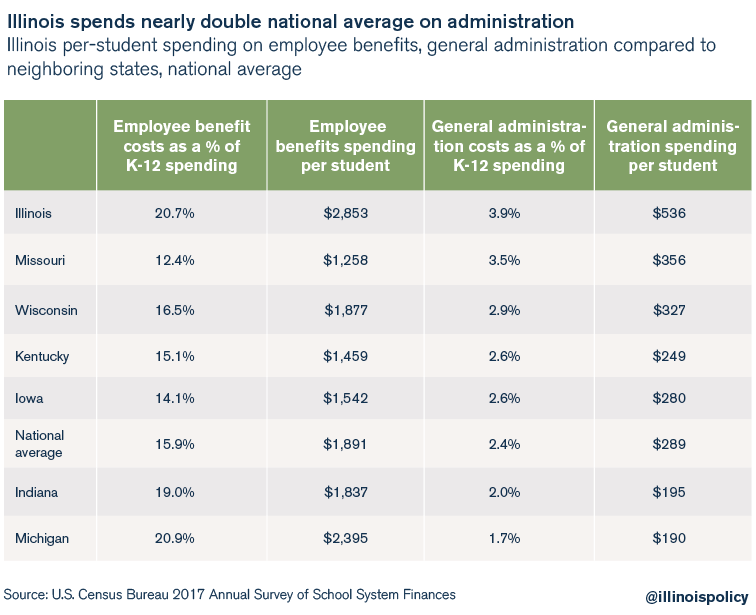On March 28, lawmakers in the Illinois House of Representatives unanimously passed House Bill 3053 in a 109-0 vote. State Rep. Rita Mayfield, D-Waukegan, introduced the bill, also known as the Classrooms First Act, in February.
The bill’s passage is a historic first step toward property tax relief and ensuring more education funding dollars in Illinois flow to classrooms rather than top-heavy administrative bodies.
The bill would create the School District Efficiency Commission, tasked with reviewing the state’s 852 school districts, which together consume nearly two-thirds of property taxes collected in Illinois. The commission would then make recommendations for consolidating districts, setting a goal to reduce the state’s number of school districts by a minimum of 25 percent.
Importantly, consolidation of school districts strictly involves merging administrative bodies, not closing individual schools. As of 2016, Illinois school districts served just 2,399 students per district, the fifth-lowest among states with school populations over 1 million, suggesting ample room for cost-saving efficiency. If Illinois served the same number of students per district as Virginia, it would have just 210 districts, 642 fewer than it has today.
The commission’s district reduction goal would not force any individual district to consolidate. Rather, its recommendations would go directly to voters as a ballot question, allowing parents, teachers and local taxpayers living within each school district to determine what is right for the students in their communities.
Finally, the bill would require all newly formed districts to be unit districts, meaning they’d serve both high schools and elementary schools. Data from the Illinois State Board of Education shows unit districts are the most efficient in terms of spending per student.
Currently, Illinois spends more to get less. Our neighbors Wisconsin, Iowa and Indiana spend between $2,400 and $4,000 fewer per student but all three states score better on K-12 math and reading proficiency, according to the National Assessment of Education Progress.

Why hasn’t more money translated to higher scores?
Illinois spends more than any neighboring state and nearly double the national average on “general administration” costs, which measures spending on school districts but excludes administrative costs within individual schools. This excessive spending on bureaucracy keeps money away from students and teachers, where it matters most.

School district administrators collecting six-figure salaries across the state provide numerous examples of misplaced education spending priorities. Take Troy Paraday, former superintendent of Calumet City School District 155, who earned a salary and benefits totaling $440,000 per year. Despite such lavish compensation, District 155 serves just three schools and 1,100 students. After an investigation into “pay padding” and other abuses, the district fired Paraday in October 2018.
Excessive administrator salaries remain commonplace in Illinois school districts. In 2017, there were over 9,000 school administrators in Illinois who made $100,000 or more per year, each of whom is expected to receive $3 million or more over the course of their retirements, due to generous taxpayer-funded pensions.
Illinois’ excessive spending on administration diverts state education dollars from teachers and students, and inflates local property tax bills. If the Illinois Senate joins the House in passing HB 3053, state lawmakers would redirect more education funds where they belong – classrooms – offering students a better education and residents some property tax relief.